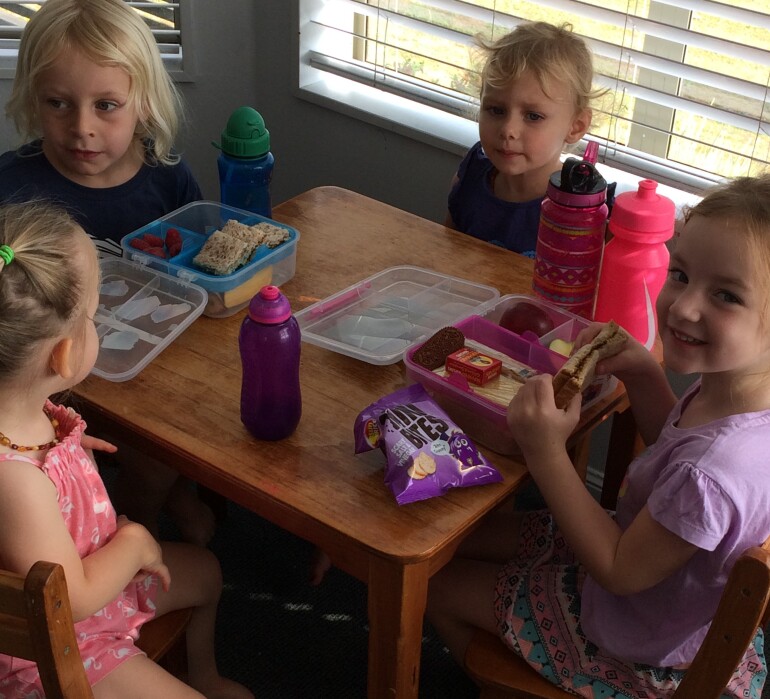News And Events

Food and Risk of Choking
24 April 2019At Nurtured at Home, we take the health, safety and wellbeing of all children in care seriously. Below is some important information on food choices for preschool children and the risk of choking.
The following information is provided by the New Zealand Ministry of Health.
Young children can choke on food quite easily. This is because they have small air and food passages, are still learning to move food around in their mouths and their biting, chewing and food-grinding skills are still developing.
To minimise their risk of food-related choking:
- Always make sure babies and young children sit down while they eat, and that someone is with them while they are eating or drinking. Establish a routine from an early age where eating is a separate activity – not associated with playing or walking/running.
- Offer food that matches their chewing and grinding abilities.
- Be aware of foods which are more likely to cause choking.
The shapes and textures of some foods means they’re more likely to cause choking. The kinds of foods more commonly associated with choking incidents are described below, along with ways of reducing the risks.
Small hard foods
These are foods which are difficult for children to bite through and break down enough to swallow safely – pieces can become stuck in children’s airways. Examples of these are:
- nuts
- large seeds (eg, pumpkin and sunflower seeds)
- hard dried fruit
- pieces of raw carrot, celery or apple
- foods that break into hard sharp pieces (eg, crisps, corn chips, rice crackers)
- unpopped popcorn husks.
To reduce the risk of choking:
- avoid giving whole nuts, large seeds or hard dried fruit to children under the age of five
- use thinly spread smooth peanut butter instead of whole or chopped nuts
- carrot, apple and celery can either be cooked until soft or finely grated.
Small round or oval foods
Foods like this can lodge in children’s airways. Examples are:
- grapes, berries and cherry tomatoes
- raisins and sultanas
- fruit with stones and large seeds or pips (eg, watermelon, small stone fruits)
- peas
- lollies/sweets.
To reduce the risk of choking:
- grapes, berries and cherry tomatoes can be quartered or chopped smaller
- soak raisins and sultanas to soften, and cut in half if large
- remove stones from fruits
- peas can be squashed with a fork.
- Young children don’t have the ability to chew small round hard, chewy or sticky lollies/sweets. These shouldn’t be given to children under the age of three.
Foods with skins or leaves
Food skins are difficult to chew and can completely seal children’s airways. Examples are:
- chicken, sausages, saveloys, cheerios, frankfurters, etc
- stone fruits (eg, plums, peaches, nectarines)
- apples and pears
- tomatoes
- lettuce and other raw salad leaves
- spinach and cabbage.
To reduce the risk of choking:
- remove or peel skins before serving
- chop up (to at least as small as the child’s small fingernail) and add to mashed food
- remove stones from fruit
- finely chop salad leaves
- cook spinach and cabbage until soft and chop finely.
Compressible foods
These are foods that can squash into the shape of a child’s throat and get stuck there. Examples are:
- sausages, saveloys, cheerios, frankfurters, hot dogs, etc
- pieces of cooked meat
- marshmallows
- popcorn
- chewing or bubble gum.
To reduce the risk of choking:
- chop up (to at least as small as the child’s small fingernail) and add to mashed food
- as above– remove skins before serving
- cook meat until very tender, chop finely and add to mashed food
- marshmallows and popcorn should not be given to children under three
- don’t give chewing or bubble gum.
Thick pastes
Foods like this can form to the shape of a child’s airway and stick to its side. Examples are:
- chocolate spreads
- peanut butter.
To reduce the risk of choking:
- use thick pastes sparingly and spread evenly onto bread.
Fibrous or stringy foods
The fibres in this sort of food can make it hard for children to break the food up into smaller pieces. Examples are:
- celery
- rhubarb
- raw pineapple.
To reduce the risk of choking:
- peel the skin/strong fibres off celery and rhubarb
- slice these foods thinly across the grain of fibres.


